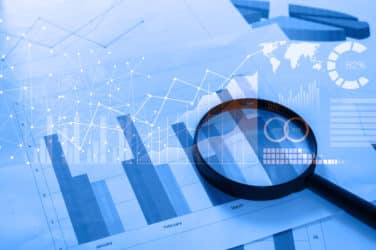PROMISED RETURN FROM DATA ASSETS UNDER MIFID II
 By Ollie Cadman
By Ollie Cadman
Head of Product and Strategy, EMEA
Vela Trading Technologies
European regulators are tearing down the instinctive, qualitative world of trading and replacing it with a measurable, traceable, transparent trading grid. This rigorous framework is imposed by the re-invented Markets in Financial Instruments Directive (MiFID II), coming into force in January 2018. It will make data an invaluable asset for trading desks. The new rules toughen demands upon equity traders – which MiFID I had harmonised across Europe in 2007 – but also expands the directive to the majority of other asset classes including derivatives, fixed income, FX (excl. spot), and commodity derivatives.
As these instruments are largely traded over-the-counter (OTC), they lack standardised trading mechanisms or even characteristics. Consequently, market participants will be required to demonstrate their trading behaviour more transparently, comply with specific trading rules and to quantify their trading activity more effectively than ever before. For many firms this requires a step change in data sourcing, processing and capture, stringent system controls and compliance procedures and increased pressure on market access infrastructure.
New market structure
The approach from the European Securities and Markets Authority (ESMA) has been to formalise the structure created around the way that assets are traded, whether on a venue, OTC, or via bilateral trading. This framework creates very clear definitions of, and rules for trading in, organised and multilateral trading facilities (OTFs/MTFs) meaning that all trading will fall within one of these categories and be more closely regulated.
While MTFs and Systematic Internalisers (SIs) should be familiar terms introduced within MiFID I and are tightly defined multilateral or bilateral trading structures, OTF is a broad term for other activities, specifically designed to ensure there is no circumventing of regulation by categorising operations as ‘outside’ of the rules. It’s also worth noting that the SI definition has also been tightened further, likely resulting in a significant increase in the number of registered SIs across Europe.
For equities, the directive also introduces new provisions for ensuring that price discovery is not compromised by market fragmentation and ‘dark’ trading, by introducing new limits that specify where trading can take place. Knowing how and where a trade can be placed is restricted by thresholds set out in the new rules. All parties will need to know whether those thresholds have been hit. While these differ across instruments, they typically track the proportion of an instrument’s trading set against total trading and against trading via that specific venue/counterparty.
As the various reporting and counterparty obligations of OTFs, MTFs and SIs are different, tracking activity accurately and reporting in a timely and consistent manner can have a real effect on where an asset can be traded and therefore on the implicit and explicit costs a firm faces as a result of execution. The number of data fields to be reported for a trade has grown to 65 from 22 under MiFID, and is applied across instruments. Consequently, aggregation and management of data has become considerably more complex.
Data will also be needed under Article 17 of MiFID II, to support the testing of trading algorithms. Not only must these be subjected to testing for functional rigor, behavioural scenarios will need to be modelled in order to create confidence around their use and full regulatory compliance.
Data as an asset
Firms must up their capacity to gather and analyse market data for reporting and best execution. By formalising the trading and reporting processes MiFID II intends to make it easier to track trade and post-trade activity, particularly as European post-trade reporting in OTC instruments such as fixed income is currently non-existent.
However, the technology for tracking trading activity is nascent for many instruments, and maturing it organically will require considerable investment amongst buy- and sell-side firms to develop responsive capabilities. Given the additional reporting obligations and the need for increased connectivity across multiple platforms, they will have to become far more operationally agile than before.
Data capture will have to begin with the buy-side order management system and continue throughout the trade lifecycle. Under the new transparency rules an electronic paper trail is needed that can be used to show where and why decisions were made. Automating the capture of this data pool and integrating it into the decision-making process can provide a real enhancement for traders, sales-traders, and portfolio managers.
Not only can this enhance in-house trading abilities, firms can share expertise in the market structure with clients to strengthen longer-term relationships as well as immediate revenues.
The balance firms have to achieve is between the regulatory requirement to be compliant and the business desire to invest, innovate, and grow. Finding the right balance will be key to a firm’s future success and selecting the right technology partner to overcome the challenges will allow them to focus on realising the new opportunities that present themselves from 3rd January 2018.





